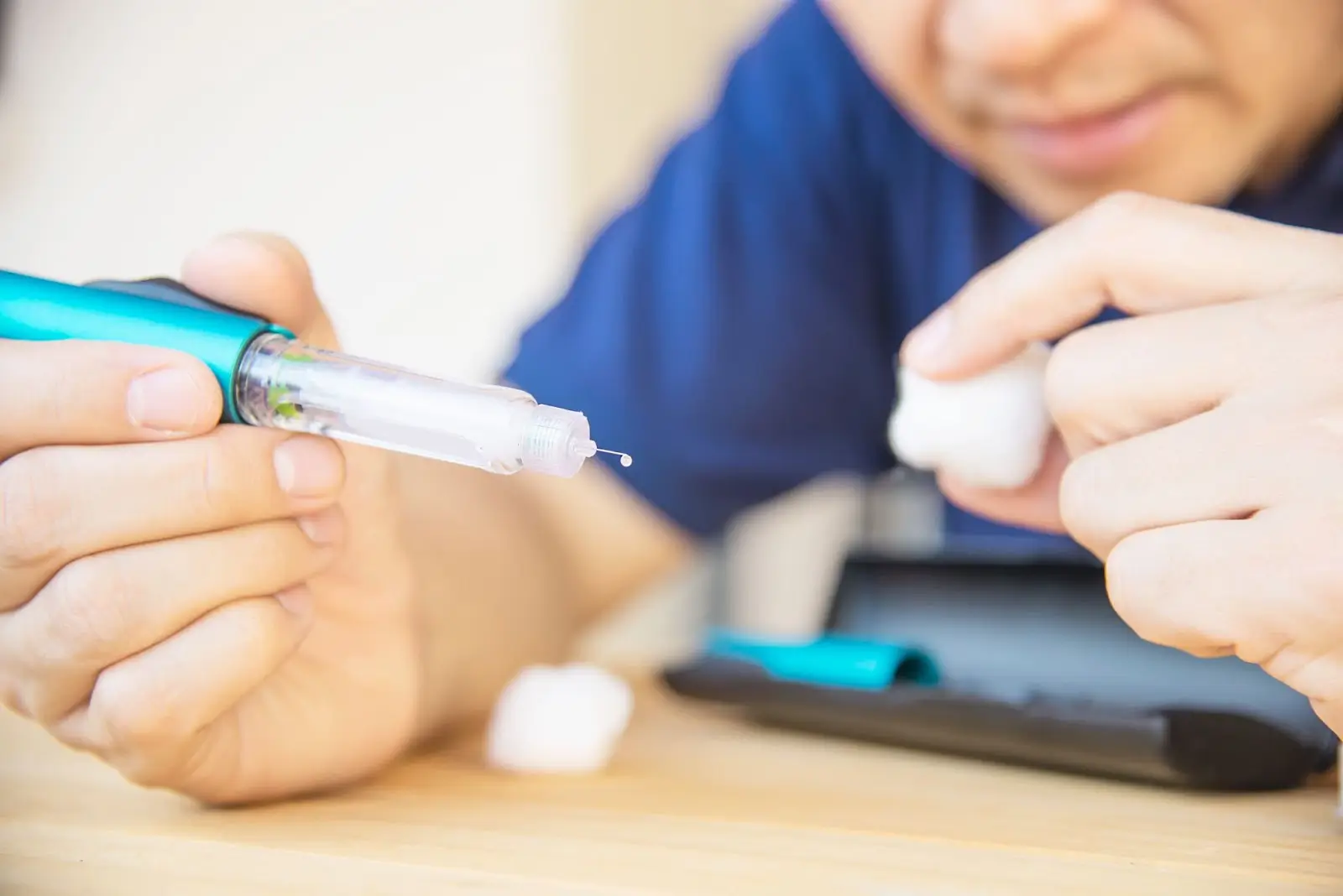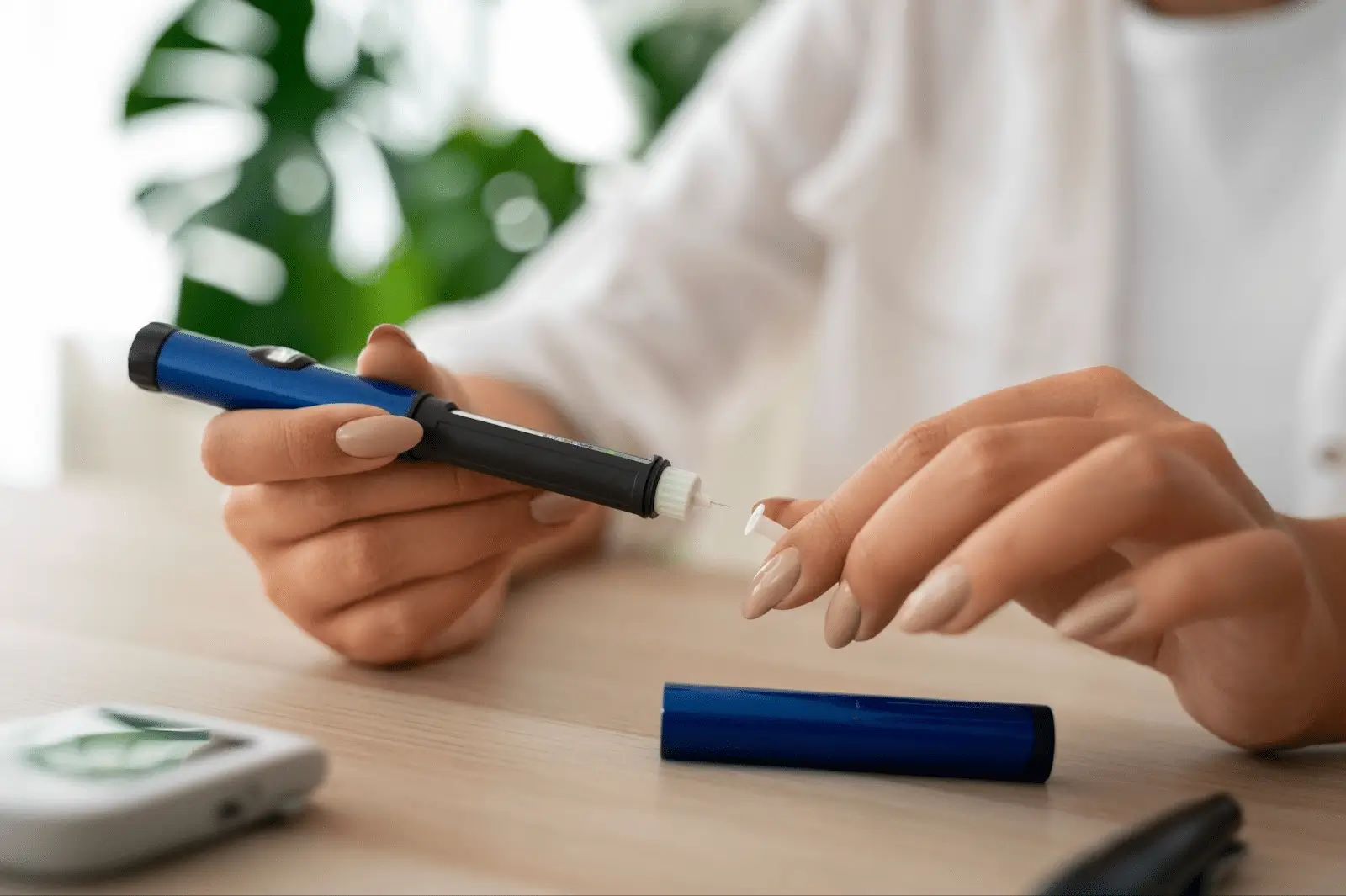Only for Licensed Professionals
Only for Licensed Professionals

Mounjaro Dose Schedule Explained
David Fuller
Last Updated On: October 8, 2025
Determining the correct dose is one of the most crucial aspects of any treatment plan. When medications are taken correctly, they work as intended and help reduce the risk of unwanted side effects. The U.S. Food and Drug Administration (FDA) frequently reminds patients and healthcare providers that incorrect dosing can lead to suboptimal results, unnecessary discomfort, or even premature discontinuation of therapy. This is especially true for injectable medications designed to manage chronic conditions like type 2 diabetes.
One of the most talked-about treatments today is Mounjaro (tirzepatide). Developed to improve blood sugar control in adults with type 2 diabetes, Mounjaro also supports weight loss through its unique dual-receptor action. Due to its growing popularity and clinical success, many people are eager to understand how the medication works and what its dosing schedule looks like.
In this article, we’ll walk through the Mounjaro dose schedule step by step. You’ll learn how the treatment is started, how doses are adjusted over time, and what to expect as your body adapts.w
Key Takeaways
- The Mounjaro starting dose of 2.5 mg once weekly allows the body to adjust safely before higher doses are introduced. This initial phase prioritizes tolerability over rapid results.
- Mounjaro titration progresses gradually from 2.5 mg to 15 mg weekly, helping patients achieve better blood sugar control and weight management while minimizing side effects.
- The maximum recommended dose is 15 mg weekly. However, long-term maintenance may be achieved at 5, 10, or 15 mg, depending on individual response and comfort.
- Mounjaro (tirzepatide) is FDA-approved for the treatment of type 2 diabetes, with its benefits for obesity and weight management available under the brand Zepbound, which was approved in 2023.
- Injections are given subcutaneously, with rotation of shot locations (abdomen, thigh, or upper arm) to prevent irritation or tissue buildup.
- If a dose is missed, it should be taken within four days; if longer has passed, it should be skipped. Patients should never take two doses in one week.
- Consistent education, dose monitoring, and patient adherence are central to achieving lasting success with tirzepatide therapy.
About: Operating since 2016, Med Supply Solutions is known for being one of the industry’s top and trusted suppliers of cosmetic and viscosupplementation products. If you’re interested in purchasing Mounjaro online, please contact our sales department for more information.

How the Starting Dose of Mounjaro Supports Tolerability

The Mounjaro starting dose plays a vital role in helping patients adjust safely to tirzepatide before reaching higher, therapeutic levels. At the beginning of treatment, the body is still adapting to the medication’s dual action—stimulating insulin release while reducing appetite. Because of this, the goal during the first few weeks is not immediate blood sugar control or weight loss, but gradual tolerance and comfort.
- Initial Phase: Patients begin with 2.5 mg once weekly for four weeks. This conservative start helps minimize gastrointestinal side effects, including nausea and stomach discomfort, which are common as the body adapts.
- Purpose: This stage helps to give the body time to acclimate to tirzepatide’s mechanism before introducing stronger doses. This steady introduction forms the basis for safe and effective titration in later weeks.
Each Mounjaro injection is administered subcutaneously, usually in the abdomen, thigh, or upper arm. Rotate Mounjaro shot locations to prevent irritation or tissue thickening under the skin.
Stepwise Escalation of Mounjaro From 2.5 mg to 15 mg

Once patients have adjusted to Mounjaro’s starting dose, the medication is gradually increased in a process known as titration. This careful, stepwise approach enhances both safety and effectiveness, allowing patients to benefit from tirzepatide’s glucose- and weight-modulating effects while minimizing side effects.
Standard Titration Plan
- 2.5 mg once weekly for 4 weeks: Initiation phase to help the body adjust to tirzepatide.
- 5 mg once weekly for 4 weeks: Begins therapeutic activity, improving insulin sensitivity and blood sugar control.
- 7.5 mg once weekly for 4 weeks: Enhances glycemic management for patients who tolerate earlier doses well.
- 10 mg once weekly for 4 weeks: Further supports glucose reduction and weight improvement.
- 12.5 mg once weekly for 4 weeks: Sustains metabolic benefits while assessing tolerance.
- 15 mg once weekly: The maximum recommended dose. Maintenance may occur at 5, 10, or 15 mg, depending on each patient’s response and comfort level.
This gradual titration ensures that patients progress safely without overwhelming the system. Each phase balances efficacy and tolerability, allowing providers to personalize dosing for the best outcomes. For many, this structured escalation improves consistency, safety, and long-term success under tirzepatide therapy.
What to Do if a Patient Misses a Scheduled Mounjaro Dose
Missed doses can happen, and handling them correctly helps maintain both safety and treatment effectiveness. If a Mounjaro dose is missed and it has been less than four days (96 hours), patients should take it as soon as possible and then return to their regular dosing schedule. This helps maintain steady blood glucose levels and ensures the medication continues working as intended.
If more than four days have passed, the missed dose should be skipped. Patients should never inject two doses in one week to make up for it, as this can raise the risk of gastrointestinal side effects or hypoglycemia. Instead, they should wait until their next scheduled day to resume.
To reduce missed doses, clinicians may recommend practical tools, such as smartphone reminders, integrating injections into weekly routines, or nurse follow-ups for extra support. These strategies reinforce adherence, which is crucial for long-term glucose stability and weight management success with tirzepatide.
Practical Tips for Clinicians on Managing the Mounjaro Schedule
Effective patient education and ongoing clinical monitoring are key to achieving the best outcomes with Mounjaro. Healthcare providers can strengthen treatment success by combining clear communication with practical lifestyle guidance.
- Educate Early: Explain the full tirzepatide dosing schedule before treatment begins, including expected side effects and timelines.
- Assess Tolerance: Reevaluate gastrointestinal symptoms and general comfort at each titration step.
- Encourage Adherence: Remind patients to take Mounjaro once per week—no more, no less.
- Monitor Progress: Track HbA1c, body weight, and cardiovascular markers regularly to assess efficacy and safety.
Conclusion
Following the correct Mounjaro dose schedule is the foundation of safe and effective tirzepatide therapy. The stepwise increase from 2.5 mg to 15 mg weekly supports both tolerance and long-term metabolic results. With attentive clinician guidance, steady dosing habits, and engaged patients, Mounjaro can deliver meaningful improvements in blood sugar control and weight management, helping people achieve sustainable health outcomes.
FAQs
1. How often should I take Mounjaro?
Mounjaro is taken once a week, ideally on the same day each week. Consistency helps maintain stable medication levels and improves results.
2. What happens if I miss a Mounjaro dose?
If it’s been less than 4 days, take it as soon as possible. If more than 4 days have passed, skip the missed dose and continue with your regular schedule.
3. When will I see results from Mounjaro?
Most patients notice improvements in blood glucose and appetite control within 4–8 weeks. Continued use over several months supports more visible weight reduction and better metabolic balance.
4. Can I adjust my dose on my own?
No. Dose changes must be supervised by a healthcare professional to ensure safety during tirzepatide titration and to avoid unwanted side effects.
References
U.S. Food and Drug Administration. Medication Errors Related to CDER-Regulated Drug Products. FDA. Updated October 31, 2024. https://www.fda.gov/drugs/drug-safety-and-availability/medication-errors-related-cder-regulated-drug-products
U.S. Food and Drug Administration. FDA Adverse Event Reporting System (FAERS) Database. FDA. Updated September 23, 2025. https://www.fda.gov/drugs/drug-approvals-and-databases/fda-adverse-event-reporting-system-faers-database
Levy ME, Barrett KMS, Cirulli ET. Semaglutide vs Tirzepatide Dosages for Weight Loss. JAMA Internal Medicine. Published online November 25, 2024. doi:10.1001/jamainternmed.2024.5768
Products
Cart
Log In
Newsletter
Subscribe for exclusive offers and updates on new arrivals
Share feedback at:
Working Hours
MON - SUN 9AM to 6PM EST
The Most Popular Brands
Med Supply Solutions
Support
Secure checkout is guaranteed with full adherence to PCI DSS payment standards.
Products listed here are guaranteed authentic and manufacturer-sourced.
Pay easily with trusted providers


*Google and Apple Pay are currently only available via a direct link provided by your account manager.
Copyright 2025. Med Supply Solutions